IN THIS ISSUE of Charleston Currents #11.09 | Jan. 7, 2019
FOCUS: Neighborhoods should benefit from Lowcountry Rapid Transit
COMMENTARY, Brack: Don’t play verbal shell games with tax reform
IN THE SPOTLIGHT: SCIWAY
PALMETTO POEM, Wentworth: One river, one boat
GOOD NEWS: On cloud study, new TUW CEO, more
FEEDBACK: Goodwill president thanks community
MYSTERY PHOTO: Looks like something under construction
S.C. ENCYCLOPEDIA: Coker College
CALENDAR: Charleston Jazz Festival set to start Jan. 24
FOCUS: Neighborhoods should benefit from Lowcountry Rapid Transit
“Most of the wonderful places in the world were not made by architects, but by people.”
— Christopher Alexander
By Kyra Morris, contributing editor | Lowcountry Rapid Transit (LRT), a proposed dedicated bus system between Summerville and Charleston, should not be just a metro system for transportation. It should also be the focal point for comprehensive community redevelopment, especially for stations along Rivers Avenue in North Charleston.
Now is the time for the planning and fund-raising. All of the benefits and barriers should be considered. We need to seize this opportunity for all of the Tri-county community and create neighborhoods where there are green spaces, safe areas for pedestrians and cyclists, creative mixed use environments for housing and businesses, and social networking centers.
A lot of research has been done showing that improving the environment often provides the nudge for individuals to lead healthier more productive lives. A lot of research also has been done showing that the Charleston area needs to mitigate sprawl and develop blueprints that show desirable urban in-fill.
The LRT is on a pathway towards implementation. This pathway goes along Rivers Avenue and proposes 18 stations on its route, as outlined in an earlier column. These stations need to be not only functional, weatherproof and aesthetic, but they also need to be accessible easily by foot and bicycle traffic. Now is the time to do the planning to rethink neighborhoods and areas around these stations. We need to figure out the whats and the hows of each station, and to determine what kinds of public and private funding exists to facilitate improvements.
The Blue Zones Project is a resource. It stems from work published by Dan Buettner in 2005. He identifies five areas in the world where people live healthier and longer lives. The commonalities of the areas are based on family, green space, healthy eating, exercise and social engagement.
This work also discusses “Life Radius,” which is the area close to home where most people spend 90 percent of their time. Life Radius does not focus solely on the individual but includes the environment and systems around the individual. Therefore in tandem with Life Radius concepts, the process of development should consider street and park designs, green spaces with bike and pedestrian pathways, mixed-use business and housing, public policies, ordinances, schools and social involvement. According to this concept, if healthy and environmentally sustainable choices are apparent and part of the community infrastructure, then healthy, environmentally- and economically-sustainable decisions will be made.
The obvious need is the active access for each LRT station. Each should be attractive, safe and easy to access by pedestrians and cyclists, not just automobiles. If we can achieve this, the probability increases that the surrounding community may be more engaged and active.
Social networks also are part of this integrated development concept. Bringing people together strategically to have shared, positive interactions creates good habits and perpetuates good decisions. Therefore, the access to churches, schools, healthy restaurants, grocery stores and places of work become part of the community design. The act of engaging and improving a neighborhood provides ways for individuals to get involved and to volunteer in projects that mean something to them. This creates bonds from within that hold communities together for generations.
The Blue Zones Project provides several examples of the benefits of improving the environment of communities. Examples include substantial reductions in cardiovascular disease and incidence of cancer. Other independent research, such as a five-year study from the University of Louisville, shows the proximity and density of green spaces have a direct correlation on the levels of the “stress” hormone epinephrine. The findings were irrespective of the participants’ age, sex, ethnicity, smoking status, neighborhood deprivation, the use of statin medications and roadway exposure. Christopher Alexander, a world-renowned architect, has been a leader in environmental design since the 1970s. The concept that the environment of a neighborhood is directly correlated with its health, mental status and economic sustainability is based on facts and research.
Even though Charleston recently declined becoming Blue Zone Certified community, Charleston’s mayor’s office said valuable lessons were learned to help with new and more effective initiatives for our communities. So let’s apply what we’ve learned to planning and implementation of Lowcountry Rapid Transit.
Now the opportunity exists for making a difference with the construction of the LRT. The benefits include the use of desirable urban in-fill, creative mixed-use habitats and attractive accessible green spaces for many to enjoy. These benefits will ultimately and organically improve our tax base, which will aid our ability to sustain communities along the LRT. The return on our investment will be long-term — and will benefit our children and our children’s children.
The LRT provides us with the catalyst to rethink community development. We may relook at government policies for infrastructure along with policies for things such as food and tobacco,. We may take a fresh look at the placement of jobs, schools, restaurants, places to share faith and housing. We may purposefully provide new social networks where people can get involved and volunteer to help sustain the culturally rich environment we call our home – all of Charleston. The LRT is more than a transit system. It is a pathway to new communities.
- Have a comment? Send to: editor@charlestoncurrents.com
BRACK: Don’t play verbal shell games with tax reform
By Andy Brack, editor and publisher | Two people can look at a painting or watch the same football game and see two completely different things.
 One person, for example, might see little more than an abstracted bull, horse and people in Picasso’s Guernica. Another might be moved to tears over human suffering.
One person, for example, might see little more than an abstracted bull, horse and people in Picasso’s Guernica. Another might be moved to tears over human suffering.
A fan of one team on the gridiron might see a team experiencing a crushing loss. A supporter of the opposing team might tell friends he’d witnessed the best football game ever.
How one views an event or a painting or an issue of public policy is often a matter of perspective.
With this in mind, let’s look to an issue sure to rear its head throughout the coming session of the South Carolina General Assembly: Tax reform.
When people start talking about tax reform, most think it’s a good idea. They generally don’t like taxes, or the cost that one pays to fuel government services that most people want. But they do want to reform that system so that they feel like they’re getting more for their money or making a better investment with their tax dollars.
Real tax reform is more complicated because it’s a matter of perspective.
The state Chamber of Commerce Foundation, which commissioned a big report on how to overhaul South Carolina’s complicated tax structure, is pushing for reform that essentially will broaden the tax base and lower rates – a concept that economists roundly endorse as making good fiscal and structural sense.
The phrase “broadening the base,” however, means more things could be taxed. In South Carolina, for example, few professional services, such as legal fees, are subject to sales tax. A “reform” of how these services are taxed could make people who use lawyers pay more in taxes. But broadening who pays could ultimately lower the rate, which could help even more people.
Similarly, look at the billions of dollars the state doesn’t collect annually due to sales tax exemptions. For people who have been subsidizing a special-interest exemption, removing it might seem fair because they would no longer pay for it. But the folks benefiting from the exemption wouldn’t be happy because they’d have to pay more in sales taxes.
Yes, it’s complicated. But for lots of taxpayers, this notion of fairness is central to comprehensive tax reform. They want to make sure the burden of state taxes they’re shouldering is fair compared to everyone else. They don’t want to pay a higher portion of taxes than someone who is rich.
This sense of tax fairness or equity came up time and again in dozens of comments to a recent Statehouse Report reader survey. When asked to explain what tax reform means to them, here are some reader responses:
“Logically fair tax rates and distribution of tax revenues,” said Michele Barker of Beaufort.
“Fair distribution of paying responsibility to include rethinking tax breaks for corporations,” responded Jennifer Reed of Columbia.
“Tax reform to me means equality,” said William Spearman of Summerville. “No loopholes, no favored business sectors, etc. And I believe the poorest should not be taxed excessively.”
Another reader: “Everyone pays their fair share, including the wealthy, so the middle class does not bear the greatest burden.”
But comments also show how the notion of fairness can be squishy. Reform, one person said, meant fairness, but also higher taxes for the rich.
Few legislators answered a similar survey. But those who did, most of whom were Republican, offered a different notion of comprehensive tax reform. Rather than something based solely on fairness with strategies of broadening the base and lowering rates, they mentioned something else – tax neutrality. They viewed reform as rearranging taxing structures while keeping state revenues the same.
Unfortunately, that adds a level of complexity to everything. It would be difficult to treat everyone fairly and broaden a base to make it more structurally sound. Reforming structures in a revenue-neutral way likely would create shifts from one group to another.
South Carolina legislators need to revamp the antiquated tax structure. But they need talk honesty and candidly about tax restructuring that will be fairest to all. Otherwise, they will be playing a verbal shell game, dooming real tax reform yet again.
- Have a comment? Send to: editor@charlestoncurrents.com
SPOTLIGHT: SCIWAY
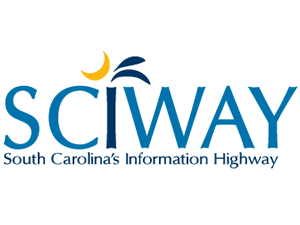 The public spiritedness of our underwriters allows us to bring Charleston Currents to you at no cost. Today we shine our spotlight on SCIWAY. Pronounced “sky-way,” SCIWAY is South Carolina’s Information Superhighway — the largest and most comprehensive directory of South Carolina information on the Internet. It includes thousands of links to other South Carolina Web sites, including Charleston Currents, as well as an amazing collection of maps, charts, articles, photos and other resources.
The public spiritedness of our underwriters allows us to bring Charleston Currents to you at no cost. Today we shine our spotlight on SCIWAY. Pronounced “sky-way,” SCIWAY is South Carolina’s Information Superhighway — the largest and most comprehensive directory of South Carolina information on the Internet. It includes thousands of links to other South Carolina Web sites, including Charleston Currents, as well as an amazing collection of maps, charts, articles, photos and other resources.
- To learn more about this extraordinary information hub that 7 million people visit a year, go to: http://www.SCIWAY.com.
- To meet all of our underwriters, click here.
POEM: One River, One Boat
EDITOR’S NOTE: S.C. Poet Laureate and contributing editor Marjory Wentworth wasn’t asked to read a poem at this week’s gubernatorial inauguration in Columbia. But this poem, written for a past inauguration, still works, she told us. We thought it fitting to remember these powerful words. Thanks, Marjory! Well done.
“I know there’s something better down the road.”
— Elizabeth Alexander
By Marjory Wentworth
In memory of Walter Scott and Muhiyyidin d’Baha
Because our history is a knot
we try to unravel, while others
try to tighten it, we tire easily
and fray the cords that bind us.
The cord is a slow-moving river,
spiraling across the land
in a succession of S’s,
splintering near the sea.
Picture us all, crowded onto a boat
at the last bend in the river:
watch children stepping off the school bus,
parents late for work, grandparents
fishing for favorite memories,
teachers tapping their desks
with red pens, firemen suiting up
to save us, nurses making rounds,
baristas grinding coffee beans,
dockworkers unloading apartment size
containers of computers and toys
from factories across the sea.
Every morning a different veteran
stands at the base of the bridge
holding a cardboard sign
with misspelled words and an empty cup.
In fields at daybreak, rows of migrant
farm workers standing on ladders, break open
iced peach blossoms; their breath rising
and resting above the frozen fields like clouds.
A jonboat drifts down the river.
Inside, a small boy lies on his back;
hand laced behind his head, he watches
stars fade from the sky and dreams.
Consider the prophet John, calling us
from the edge of the wilderness to name
the harm that has been done, to make it
plain, and enter the river and rise.
It is not about asking for forgiveness.
It is not about bowing our heads in shame;
because it all begins and ends here:
while workers unearth trenches
at Gadsden’s Wharf, where 100,000
Africans were imprisoned within brick walls
awaiting auction, death, or worse.
Where the dead were thrown into the water,
and the river clogged with corpses
has kept centuries of silence.
It is time to gather at the edge of the sea,
and toss wreaths into this watery grave.
And it is time to praise the judge
who cleared George Stinney’s name,
seventy years after the fact,
we honor him; we pray.
Here, where the Confederate flag
flew beside the Statehouse, haunted
by our past, conflicted about the future;
at the heart of it, we are at war with ourselves
huddled together on this boat
handed down to us – stuck
at the last bend of a wide river
splintering near the sea.
Marjory Wentworth, South Carolina’s poet laureate, is a contributing editor for Charleston Currents. She lives in Mount Pleasant. Learn more about her here.
GOOD NEWS: CofC cloud study, new United Way CEO, more
Staff reports | A new study by a College of Charleston professor could tell us more about the shape of water.
Physics professor Mike Larsen is working on a project that has allowed him to measure the three-dimensional statistical structure of water drops in clouds, according to a press release. These cloud droplets grow by the diffusion of water vapor before collisional growth turns the tiny droplets into drizzle and rain.
Using an aircraft-mounted holographic cloud particle imaging device, Larsen and his collaborators were able to fly inside clouds to get real-time measurements of water droplet clustering. By using this method, they were able to record and analyze individual cloud droplet positions to determine the degree of cloud particle clustering. Previous research had to be conducted in laboratory settings.
“This is the first time that a fully three-dimensional statistical measurement of this clustering has been made for natural clouds,” says Larsen. “The results show evidence of cloud-particle clustering consistent with numerical simulations and laboratory experiments conducted under turbulence conditions significantly different from the natural atmosphere.”
This research has far-reaching implications for improving our understanding about how particles interact with turbulent motions and may have applications in areas as varied as planet formation, fuel spray in a combustion chamber and rain formation. The study was recently published as an editor’s suggested article in the journal Physical Review Letters.
In other Good News:
New United Way CEO. Chloe Knight Tonney has been selected as Trident United Way’s next president and CEO, the organization announced early this morning. Current TUW head Chris Kerrigan’s retirement is slated for April. Tonney returns to the Tri-county area after spending 16 years with the CDC Foundation in Atlanta, where she most recently served as the chief innovation and strategy officer. She focused on catalyzing creative partnerships that advanced the mission of Centers for Disease Control and Prevention. Tonney brings more than 30 years of overall nonprofit advancement, strategy and management experience with her to TUW. Learn more.
Stepping down. John C. Read, CEO of Tri-County Cradle to Career Collaborative, will step down later this year, according to an announcement last week. The organization, which works to improve education, will conduct a search for a new CEO. More. “It has always been my view that a non-profit CEO – especially one first to hold the position – should be careful not to overstay his welcome,” Read said in a statement. “TCCC has found its place in the community and is here to stay. I intend to continue the work on behalf of education attainment in the tri-county region, just from some other perch.”
More airport kiosks. The Charleston County Aviation Authority is increasing the number of small business kiosks in the terminal of Charleston International Airport. Currently, three small businesses operate in kiosks. Two more are being added. If interested, click here to learn about the application process.
Sluggish start. Key state lawmakers are predicting a sluggish start to the new legislative session, which opens this week. Read more from Statehouse Report.
FEEDBACK: Goodwill president thanks community
To the editor:
![]() As we usher in 2019, I want to take time to reflect on a fantastic year and thank every person who donated to Palmetto Goodwill, supported our events, shopped in our stores or volunteered their time.
As we usher in 2019, I want to take time to reflect on a fantastic year and thank every person who donated to Palmetto Goodwill, supported our events, shopped in our stores or volunteered their time.
We are proud that more than 90 cents of every dollar we generate from our business services and the sales of gently used clothing and donated items is used to provide job training and employment services in the communities we serve. And we are even more proud that our Mission Services saw more than 3,000 people placed into new jobs during 2018 — a new record for our Goodwill. We also moved more people through our training programs than ever before!
None of this would be possible without community support in the form of donations, volunteers and all the thrift shoppers out there. On behalf of our Board of Directors, employees, partner agencies and most importantly, the people we serve, thank you! We are truly grateful for your contributions and continued support and we promise to make 2019 even more successful.
— Robert Smith, president and CEO, Palmetto Goodwill, North Charleston, S.C.
Cauliflower OK; Honeydew, not so much
To the editor:
While I don’t agree with your assessment of cauliflower, I can appreciate it — I have a similar view of the worthless and unredeemable honeydew melon.
— Will Suggs, Charleston
We haven’t heard from you lately; Send us your thoughts
We’d love to get your impact in one or more ways:
- Send us a letter: We love hearing from readers. Comments are limited to 250 words or less. Please include your name and contact information. Send your letters to: editor@charlestoncurrents.com. | Read our feedback policy.
- Tell us what you love about the Lowcountry. Send a short comment – 100 words to 150 words – that describes something you really enjoy about the Lowcountry. It can be big or small. It can be a place, a thing or something you see. It might the bakery where you get a morning croissant or a business or government entity doing a good job. We’ll highlight your entry in a coming issue of Charleston Currents. We look forward to hearing from you.
- Click here to TELL US what you love.
- Click here to READ what others love
MYSTERY: Looks like something under construction
This is obviously a construction site. Hint: It’s in South Carolina. But where … and what is it? Send your guess to: editor@charlestoncurrents.com. And don’t forget to include your name and the town in which you live.
Our previous Mystery Photo
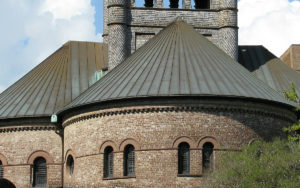 Our Dec. 31 mystery, “Is it a castle?” should have been easy for people who walk around old Charleston. It wasn’t a castle, but a close-up photo of the Circular Congregational Church at 150 Meeting Street.
Our Dec. 31 mystery, “Is it a castle?” should have been easy for people who walk around old Charleston. It wasn’t a castle, but a close-up photo of the Circular Congregational Church at 150 Meeting Street.
We got a lot of correct identifications from photo detectives around the city and region. Congratulations to: George Graf of Palmyra, Va.; Chris Brooks of Mount Pleasant; Marnie Huger of Richmond, Va.; Linda Ketner, Freida McDuffie, Susu Ravenel and Stephen Yetman, all of Charleston; Paul Hedden and Archie Burkel, both of James Island; Bill Segars of Hartsville; Katharine Beard of Camden; Deborah Getner of Johns Island; Bruce Jayne of Saluda, N.C.; and Bud Ferillo of Columbia.
Segars provided more context: “The congregation was established in 1681 and this Richardson Romanesque building was completed in 1892. It was designed by Robert S. Stephenson & Ernest S. Greene. Henry Oliver built it using many of the brick from the 1806 third building that burned. This building and the Parish House was listed in the National Register Nov. 7, 1973.”
Graf sent along some interesting information on two noted people buried in the church’s graveyard, according to the church: Arthur Peronneau (died 1774) and Richard Hutson (d. 1795). Perroneau may have been the first person to have been buried in the large brick vault in the center of the cemetery, while Hutson, his brother-in-law, may have been the most famous. He was Charleston’s first mayor, according to this website.
- Send us a mystery: If you have a photo that you believe will stump readers, send it along (but make sure to tell us what it is because it may stump us too!) Send it along to editor@charlestoncurrents.com.
HISTORY: Coker College
S.C. Encyclopedia | Founded in 1908, Coker College is an independent liberal arts college located in Hartsville. Named for Major James Lide Coker, the college is the product of his philanthropic efforts to improve the state’s educational opportunities. This work began with the establishment of Welsh Neck High School in 1894. In 1907 the creation of a statewide public high school system alleviated the need for private high schools, and Coker embraced the opportunity to convert the high school into a women’s college. Thus, Coker College was born. The burgeoning business enterprises of the Coker family provided funds to support the new institution. Major Coker donated $25,000 for the construction of an administration building in 1909; $150,000 for the college’s endowment in 1910; and $65,000 for a one-hundred-bed dormitory in 1914.
At the start of the twentieth century, the college maintained its Christian nondenominational roots. The earliest catalog noted that “no attempt whatsoever to influence pupils in their denominational preferences will be made or tolerated.” Major Coker believed that education, rather than religion, was the primary purpose of higher education. In 1944 the college broke its ties to the Baptist Association and reorganized its self-perpetuating board.
After Coker’s death in 1918, his heirs ensured his legacy. Successive generations funded construction, including the library (1962), the student center (1971), and a performing arts center (1997). Kalmia Gardens, a thirty-acre nature preserve, was donated to the college in 1965. Perhaps most telling of the family’s contributions to the college is that prior to 1969 all college facilities were built without debt.
Despite challenges, Coker College held on to its roots in the liberal arts. In 1929 a $400,000 endowment campaign was wiped away by the stock market crash. Enrollment wavered; the board authorized new course offerings to include business administration and “areas of vocational and professional demand.” In the years following World War II, returning veterans enrolled. Officially, the college became coeducational in 1969, and the first men enrolled in 1970. Under a mandate by the Civil Rights Act, the college opened its doors to minorities, and the first African American female enrolled in 1968. The 1960s also witnessed increasing competition from Winthrop College in Rock Hill. In order to remain competitive, Coker instituted several programs designed to broaden the college’s reach and income. The Military Degree Completion Program was instituted in 1970 to assist National Guardsmen and, later, soldiers stationed at Fort Jackson with college coursework. The college also agreed to house the Governor’s School for Science and Mathematics, thus utilizing college facilities and serving statewide needs.
In 2000 Coker’s on-campus enrollment of more than four hundred was drawn by its solid reputation, as noted by U.S. News & World Report and Barron’s college reviews. Such distinctions were gleaned from Coker’s “round table” teaching style, as most classes were taught around large tables, thus fostering classroom dialogue. Many classes had fewer than twelve students, and eighty-five percent of the faculty held the highest degrees in their fields. The student population was seventy percent female and approximately twenty percent African American.
— Excerpted from an entry by Julie Rotholz. This entry hasn’t been updated since 2006. To read more about this or 2,000 other entries about South Carolina, check out The South Carolina Encyclopedia, published in 2006 by USC Press. (Information used by permission.)
CALENDAR: Charleston Jazz Festival set to start Jan. 24
Staff reports | More than 100 local, regional and national jazz artists will descend on the Lowcountry Jan 24 for the start of the fifth annual Charleston Jazz Festival, a four-day string of performances ranging from home-grown talent to legends of jazz and emerging artists.
Performances of note include Latin Grammy Award-winner Nestor Torres on Jan 24 at Charleston Music Hall; Bobby McFerrin with Ranky Tanky at the Charleston Gaillard Center on Jan. 26; and Family Jazz Day Jan. 27 at the Sottile Theater in downtown Charleston.
This year’s festival will be a variety of venues throughout Charleston including the Charleston Gaillard Center and Sottile Theatre. Nearly 3,000 attendees are expected during the festival to celebrate America’s quintessential art form. Learn more and buy tickets.
Also on the Calendar:
![]() Restaurant Week: Jan. 9 to Jan. 20, throughout the area. You can get deals at more than 100 restaurants throughout the Charleston area during Charleston Restaurant Week, which starts Jan. 9 and lasts through Jan 20. Check out this website to learn about all of the participating Lowcountry restaurants, the deals they offer and how to reserve your table.
Restaurant Week: Jan. 9 to Jan. 20, throughout the area. You can get deals at more than 100 restaurants throughout the Charleston area during Charleston Restaurant Week, which starts Jan. 9 and lasts through Jan 20. Check out this website to learn about all of the participating Lowcountry restaurants, the deals they offer and how to reserve your table.
January’s Gaillard events. Check out these awesome January events at the Charleston Gaillard Center, 95 Calhoun St., Charleston:
- Through Jan. 18 (business hours): Prints in Clay photography exhibit, free. It’s a collection of photographs to support the Slave Dwelling Project. A celebration of spiritual music will be held 5 p.m. Jan. 13 with world-class singers and music.
- Jan. 9, 7:30 p.m.: Rock of Ages, 10th anniversary tour.
- Jan. 17, 7:30 p.m.: Charleston Symphony Orchestra presents “Around the World in 80 minutes.”
- Jan. 22, 7:30 p.m.: Martha Graham Dance Company.
- Jan. 26, 8 p.m.: Bobby McFerrin with Ranky Tanky.
Guevara art show: Through Jan. 11, 2019 (Tuesdays through Saturdays), Redux Contemporary Art Center, 1056 King St., Charleston. Redux will present new work by fiber artist Camela Guevara in a show titled “Care Work.” Click to learn more.
Library Society’s annual meeting: 5 p.m., Jan. 15, 164 King St., Charleston. The Charleston Library Society will hold its 271st annual meeting and reception with special guest speaker Victoria Johnson, author of “American Eden: David Hosack, Botany, and Medicine in the Garden of the Early Republic.” Spaced is limited; please RSVP to 843-723-9912. More info.
MLK tribute concert: 5 p.m., Jan. 19, St. Matthew Baptist Church, 2005 Reynolds Ave., North Charleston. The City of North Charleston Cultural Affairs Department will sponsor a free concert by Lowcountry Voices to honor the memory of the late Dr. Martin Luther King Jr. and singer Aretha Franklin.
Lowcountry Oyster Festival: Jan. 27, Boone Hall Plantation, Mount Pleasant. It’s the world’s largest oyster festival and features oyster shucking and oyster eating. More than 80,000 pounds of oysters are expected to be consumed. General admission tickets are $17.50 now; $25 on day of festival. Check it out here.
Chaplin/Amble art show: Through Jan. 31, North Charleston City Gallery at the Charleston Area Convention Center, 5001 Coliseum Drive, North Charleston. Paintings by the current City of North Charleston Artist-in-Residence Quintin Chaplin, as well as photographs by local artist Richard Amble will be on exhibit More.
The Curious Gardener: 11 a.m. to 1:30 p.m., Feb. 10, Yeamans Hall Club, Hanahan. Anna Pavord, a well-known English writer on gardening, will be featured speaker at a lunch with the Charleston Horticultural Society. Spaces are limited. Tickets are $145 per person and include reception, signing of her book (The Curious Gardener), silent auction and her presentation. More: 843.570.9922.
Southeastern Wildlife Exposition: Feb. 15 to Feb. 17, downtown Charleston. This grand, annual three-day festival focuses on what people across the region love about wildlife and nature. SEWE has an incredible lineup of events – from fine art exhibits, conservation education, sporting demonstrations and parties. Learn more.
Commissioning of USS Charleston: 10 a.m., March 2, Columbus Street Terminal. Charleston. A commissioning ceremony for the new USS Charleston (LCS 18), an Independence-class littoral combat ship, requires anyone who wishes to attend to register this month and soon through the Navy League of Charleston. In late January or early February, the Navy will send an letter to those who registered online with further instructions. Then the Navy will send invitation tickets to successful registrants. If you can’t attend, you can watch online here. More info.
Early morning bird walks at Caw Caw: 8:30 a.m. every Wednesday and Saturday, Caw Caw Interpretive Center, Ravenel. You can learn about habitats and birds, butterflies and other organisms in this two-hour session. Registration not required, but participants are to be 15 and up. $10 per person or free to Gold Pass holders. More: http://www.CharlestonCountyParks.com.
AREA FARMERS MARKETS
SATURDAYS: Johns Island Farmers Market operates each Saturday from 9:30 a.m. to 1:30 p.m. year-round with more than 50 local farmers and vendors, food trucks, music and more. The market is located on the campus of Charleston Collegiate School, 2024 Academy Road, Johns Island.
- If you have an event to list on our calendar, please send it to feedback@charlestoncurrents.com for consideration. The calendar is updated weekly on Mondays.
If you like what you’ve been reading, how about considering a contribution so that we can continue to providing you with good news about Charleston and the Lowcountry. Interested? Just click the image below.
OUR UNDERWRITERS
Charleston Currents is an underwriter-supported weekly online journal of good news about the Charleston area and Lowcountry of South Carolina.
- Meet our underwriters
- To learn more about how your organization or business can benefit, click here to contact us. Or give us a holler on the phone at: 843.670.3996.
OUR TEAM
Charleston Currents offers insightful community comment and good news on events each week. It cuts through the information clutter to offer the best of what’s happening locally.
- Mailing address: P.O. Box. 22261 | Charleston, SC 29413
- Phone: 843.670.3996
Charleston Currents is provided to you weekly by:
- Editor and publisher: Andy Brack, 843.670.3996
- Contributing editor, common good, Fred Palm
- Contributing editor, money: Kyra Morris
- Contributing editor, Palmetto Poem: Marjory Wentworth
SUBSCRIBE FOR FREE
Subscriptions to Charleston Currents are free.
- Click here to subscribe.
- Unsubscribe. We don’t want to lose you as a reader of Charleston Currents, but if you must unsubscribe, you will have to do it through the email edition you receive. Just go to the bottom of any of your weekly newsletters and click the “unsubscribe” function. If that doesn’t work, please send us an email with the word “unsubscribe” in the subject line.
© 2008-2019, Statehouse Report, LLC. All rights reserved. Charleston Currents is published every Monday by Statehouse Report LLC, PO Box 22261, Charleston, SC 29413.





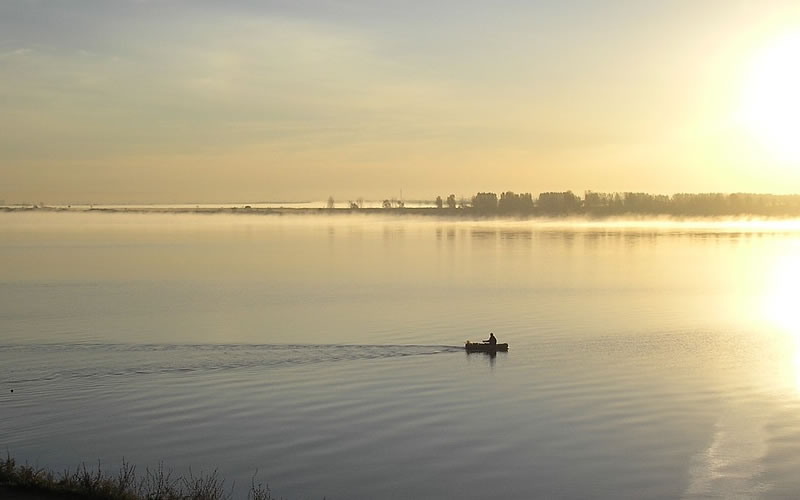


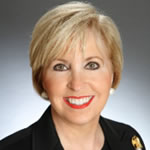
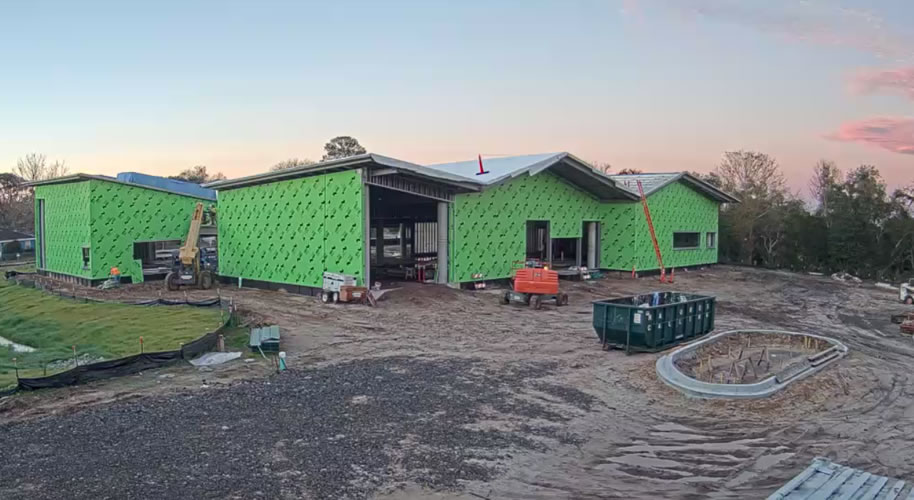
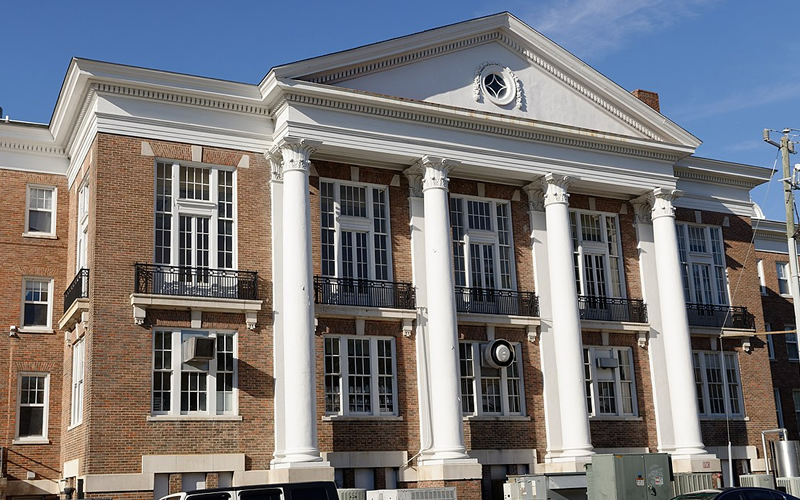


 We Can Do Better, South Carolina!
We Can Do Better, South Carolina!
























